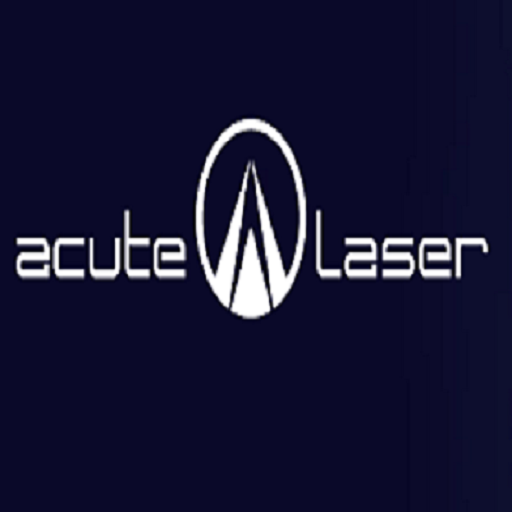-
Новости
- ИССЛЕДОВАТЬ
-
Страницы
-
Статьи пользователей
-
Courses
-
Кинозал
Precision in Every Cut: The Power of Modern Laser Cutting

In today’s fast-moving manufacturing world, accuracy and efficiency define success. Among the many technologies that have revolutionized production, Laser Cutting stands out as a game-changer. It’s a precise, fast, and cost-effective method used across industries from automotive to construction to deliver clean, accurate, and complex shapes with minimal material waste.
Understanding Laser Cutting and Its Importance in Modern Manufacturing
Laser Cutting is a technology that uses a focused laser beam to slice through materials with extreme precision. The process involves directing the laser onto the material, melting or vaporizing it instantly, and leaving behind clean, sharp edges. Unlike traditional cutting tools, laser cutting offers unmatched accuracy, making it ideal for industries that demand flawless detail.
The real strength of this technique lies in its versatility. It can cut a wide range of materials including metals, plastics, wood, and fabrics without physical contact. This means fewer mechanical errors, reduced material distortion, and higher production consistency.
How Laser Cutting Works
Laser cutting machines operate using high powered lasers, often controlled by computer numerical control (CNC) systems. The CNC software reads digital designs and guides the laser head to cut exact shapes according to the blueprint.
There are different types of laser cutting technologies used today:
1. CO₂ Laser Cutting
Perfect for non-metal materials like wood, acrylic, and fabric. CO₂ lasers deliver smooth edges and are widely used in signage, arts, and furniture manufacturing.
2. Fiber Laser Cutting
The go to choice for metal cutting. Fiber lasers can handle steel, aluminum, copper, and other reflective materials with incredible speed and precision.
3. Nd:YAG Laser Cutting
Used for thicker and harder materials, offering deep penetration and fine detailing for industrial applications.
Each method offers unique advantages depending on the type of material and the level of accuracy required.
Advantages of Using Laser Cutting
The growing popularity of laser cutting isn’t just about precision, it's about the multiple benefits that come with it.
1. Unmatched Accuracy
Laser cutting delivers exceptional precision with minimal material wastage. The laser beam can achieve cutting tolerances within a fraction of a millimeter, ideal for intricate designs.
2. Smooth Finishes and Clean Edges
Since the laser beam melts rather than tears the material, the final product has clean edges, requiring little to no post-processing.
3. Speed and Efficiency
Laser cutting machines can work continuously with high speed operation, reducing turnaround time and boosting productivity for manufacturers.
4. Versatility Across Materials
From delicate fabrics to heavy steel, laser cutting works seamlessly across diverse materials, making it suitable for various industries.
5. Automation and Consistency
CNC automation ensures that every cut, regardless of batch size, is consistent. This guarantees quality control, even in high-volume production runs.
Applications of Laser Cutting
Laser cutting’s flexibility allows it to be used across multiple industries. Some of the most common applications include:
-
Automotive industry: for precise metal components and intricate car parts.
-
Aerospace: for high-strength, lightweight materials.
-
Architecture and construction: for decorative panels and custom metalwork.
-
Electronics: for cutting circuit boards and thin metallic sheets.
-
Signage and advertising: for creating detailed, polished designs.
It’s not just industrial, even small businesses and creative artisans use laser cutting to produce custom designs, prototypes, and products.
Comparing Laser Cutting to Traditional Cutting Methods
Traditional cutting methods like sawing or mechanical drilling rely on physical force, which often leads to wear, distortion, and inaccuracies. In contrast, laser cutting offers:
-
Contactless cutting: No friction or mechanical pressure.
-
Reduced waste: The laser beam’s thin width means minimal material loss.
-
Lower maintenance: Fewer moving parts result in reduced downtime.
-
Higher speed: Automated control ensures faster production cycles.
This makes laser cutting a superior choice for businesses aiming for precision, cost-efficiency, and scalability.
The Future of Laser Cutting Technology
With continuous advancements in automation, artificial intelligence, and laser power, the future of laser cutting looks promising. Smart laser systems are now capable of auto-adjusting cutting parameters in real-time, reducing human intervention while improving accuracy.
Sustainability is also playing a growing role. Modern laser cutters consume less energy and generate less waste compared to conventional machinery, aligning with eco-friendly production standards.
Conclusion: Why Laser Cutting Is the Future of Precision Engineering
In the modern world of design and production, Laser Cutting has become synonymous with innovation and accuracy. Its ability to deliver precise results, adapt to various materials, and optimize manufacturing processes makes it an indispensable part of today’s industries.
From metal fabrication to custom art projects, laser cutting continues to shape the way we think about production one precise beam at a time. Businesses that invest in this technology gain a clear advantage in quality, speed, and efficiency, positioning themselves ahead in a rapidly evolving marketplace.
- Art
- Causes
- Crafts
- Dance
- Drinks
- Film
- Fitness
- Food
- Игры
- Gardening
- Health
- Главная
- Literature
- Music
- Networking
- Другое
- Party
- Religion
- Shopping
- Sports
- Theater
- Wellness


